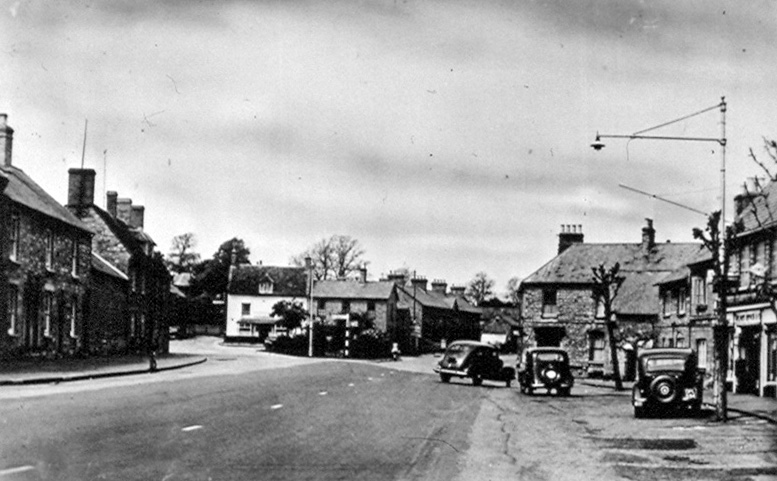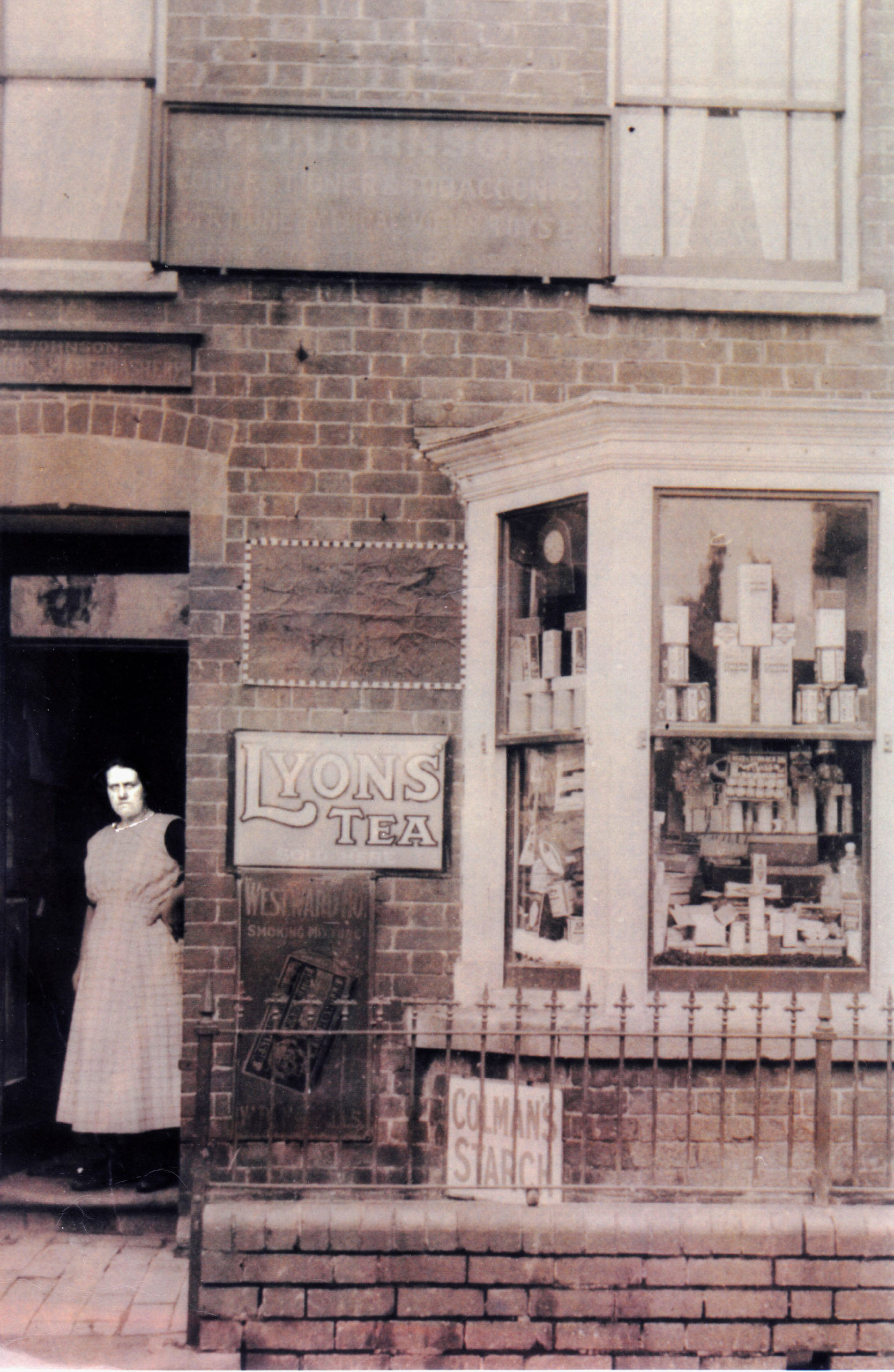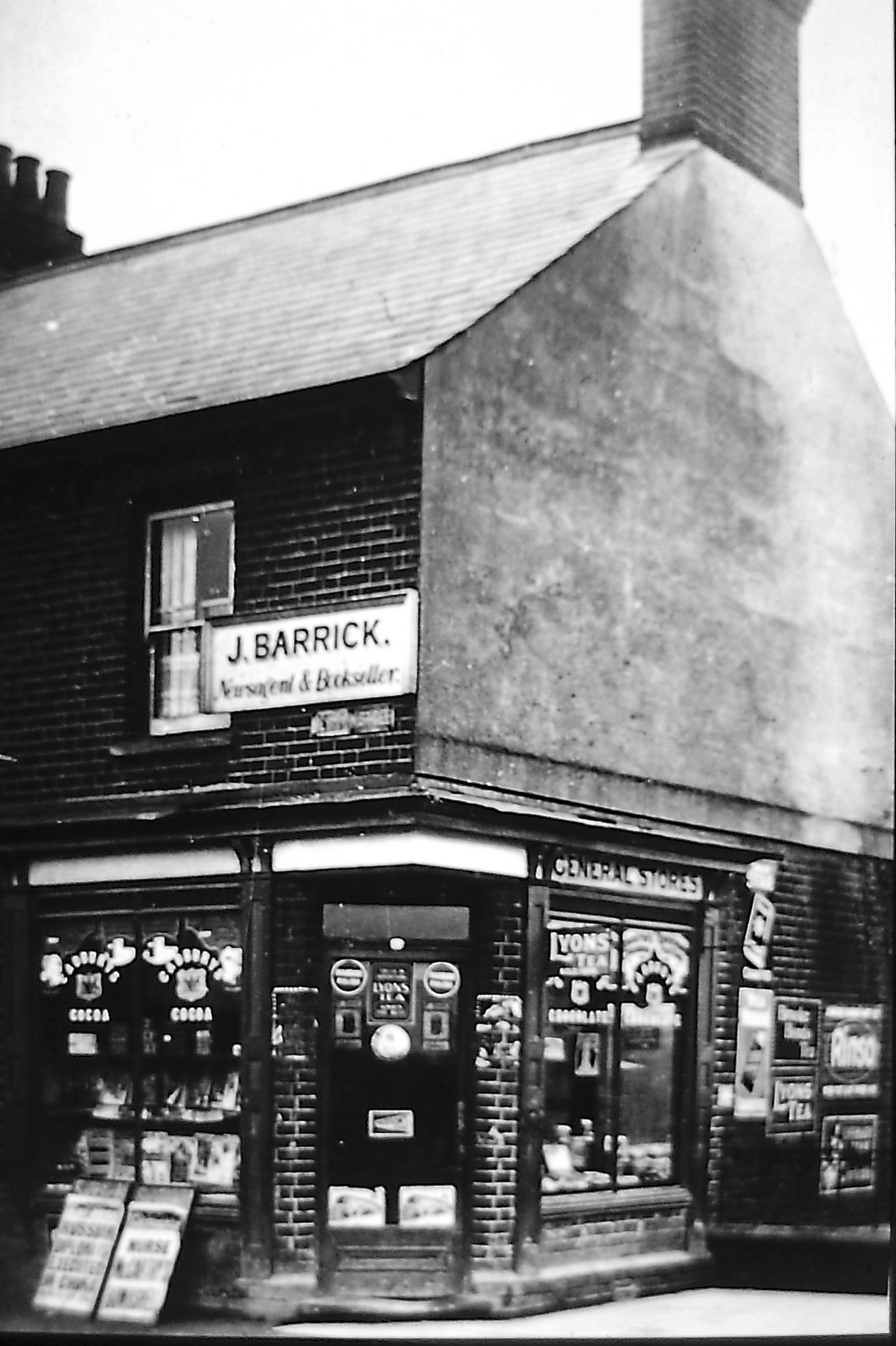Preface
(not to be used on live page)
Why not have a go at writing a blog? Should we set up an ad hoc blogging group to compile blogs on a set of agreed subjects, eg; one person nominated to blog about the Olney Fiesta? What we (the ODHS) are hoping to do is compile an entertaining series of articles on the social changes in Olney over the past 75 years, that is, between the end of WW2 (1945) and the present day (2020). What we need to portray is the huge social changes that have taken place over this 75 year period, which is well within a lifetime. We can only achieve this convincingly by including the real life personal experiences from the townspeople of Olney. Five such blogs are presented as examples, but we really need your contributions preferably with a photograph or two if available. It may be possible for the resulting series of articles to provide sufficient information and data for an academic study on the social changes in Olney over this period supported by some funding provided by the ODHS. This void in the chronological history of Olney has been identified frequently in recent years. Filling this void is now becoming a priority because the time span in question, the 75 years between 1945 and 2020 is short enough to be within the living memory of a certain generation of people, who for the most-part, may be able to relate their experiences across all decades of the period. Having said that it is equally important to acquire the experiences from younger residents and those who have moved into the town during the intervening decades so that realistic comparisons of social change can be made. Why Olney? The small market town Olney in Bucks, now administratively under the unitary authority of Milton Keynes, is considered to be a good candidate for such a study because its population is large enough to achieve meaningful results but small enough for the study not to become unmanageable. It is situated five miles from its nearest ‘rival’, the small market town of Newport Pagnell, but Olney is not adjoined, as yet, to the larger conurbation of Milton Keynes. The town is also situated close to the neighbouring counties of Northamptonshire and Bedfordshire with which it has had traditionally close trading links. Another significant factor in Olney’s favour is that over the period in question Olney has progressively achieved the status of a ‘desirable place to live’ (and unfortunately property prices reflect that fact!). And finally the Olney and District Historical Society (ODHS), largely through its extensive website, has amassed a considerable quantity of data on the history of Olney, which is fully accessible to the general public, and consequently a good base to complement further studies. So, why not start drafting your Olney blog right away? .
1 – Social standing and class structure
The social standing and class structure in country towns such as Olney, so obviously visible up to the 1940s and 1950s, has all but totally disappeared.
Sunday School Summer Treat – Dummy photo
When walking in the High Street, particularly on a Sunday, there was an subtle but pronounced deference to a section of Olney society possibly formerly known as ‘gentry’. This experience cannot be readily be defined; but suffice it to say that I could readily sense it as a child.
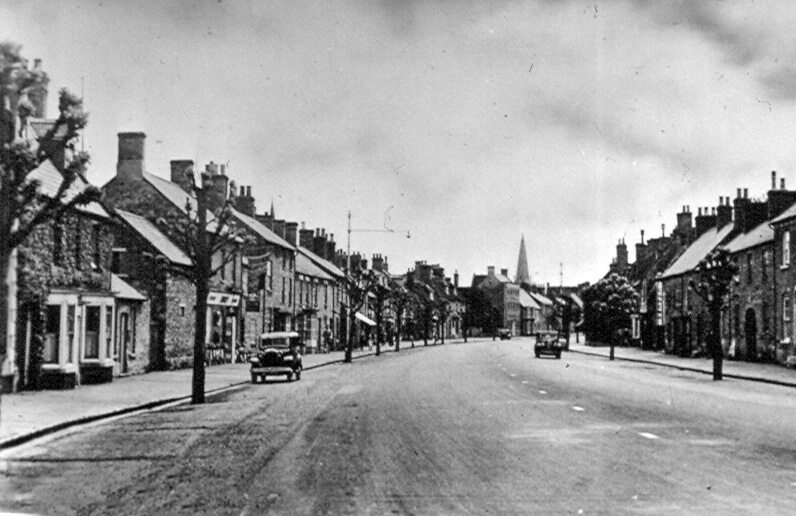
Olney High Street (Central) in the late 1940s
When walking out after noon on Sundays, children were always expected look presentable and playing in the High Street was all but unacceptable. – In New Bradwell recreational ground I remember that the swings were chained up on Sundays – Children were expected to ’behave themselves’ otherwise later the children might well be subjected to some degree of corporal punishment on their arrival at home. But not in public of course.
Children were usually directed by their parents to attend the Sunday School attached to the ‘family’ church. This was often made more palatable to children when the class was segregated into age groups and (for example) old railway and model making magazines were used to keep the boys amused. Also maybe by visiting a friend’s aunt on the way home for a glass of lemonade or similar. [Moreover, regular attendance was necessary to qualify for an invitation to the Christmas Party and the Annual Summer Treat usually to Wicksteed Park at Kettering or to Billing Aquadrome. Wicksteed was preferred because of the large number and size of the free slides, swings and roundabouts!]

A busy Olney Bathing Place circa 1945
Sunday School Summer Treat – Dummy photo
.
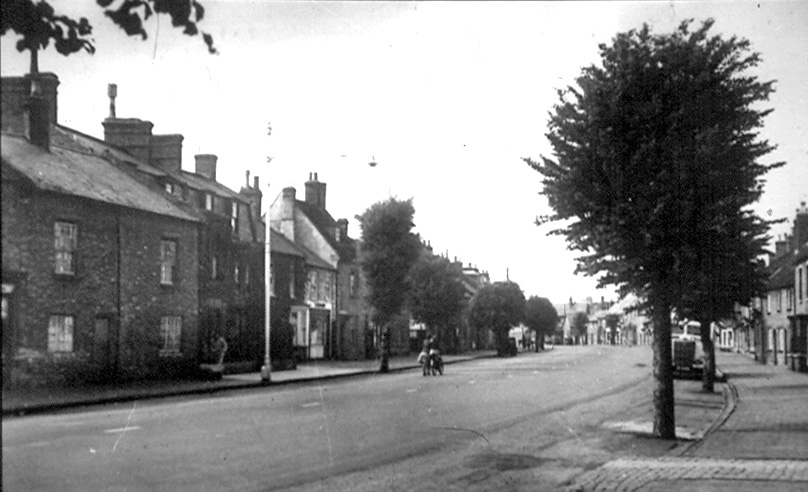
Olney High Street in the 1950s
.
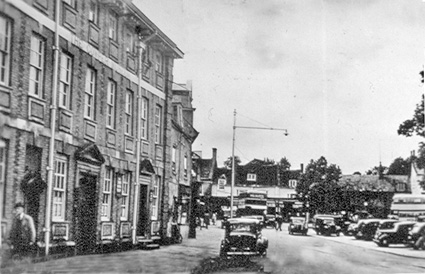
Olney Market Place in the 1950s
At weekends, usually Sundays, it was acceptable for families to promenade in the town and/or to engage in local lengthy countryside walks as the means of ‘breathing in plenty of fresh air’ before the menfolk returned to the factories early on Monday morning. Occasionally you might strike lucky on a fine weekend and spend some real fun time at Olney Bathing Place, see photo below.

A busy Olney Bathing Place circa 1945
Today (2020) there is essentially no evidence of a social class structure in the town.
Bt the scene at Olney bathing Place might not be so ????
Nevertheless there will always be natural divisions in the town’s society associated with relative wealth and business networks.
.
2 – Childhood freedoms? Yes, but!
One Olneyite’s personal view of childhood freedoms of an Olney lad in the late 1940s.
There is little doubt that in the late 1940s and early 1950s Olney children, along with others in the surrounding villages, had so much more freedom to roam and explore the local countryside. There were few restrictions on families or their children to walk, play or picnic in local meadows.
It was normal for children to ‘go out to play’ with friends well knowing that their major contraint was to return home in good time for lunch or dinner. There might occasionally have been some reference by parents to taking care when near the river. Also, primary school children were expected to walk to and from school unaccompanied when aged around 6 or 7, usually with a couple of friends of similar age. Most children arrived at the school a little early to play for a while before the school bell rang at 9.00 am. (The school in question is now known as ‘The Olney Centre’.) I seem to remember that by the time I was seven I traveled alone during school holidays on an Eastern National double decker bus from Olney to New Bradwell where I was met off the bus by my grandfather.
Image of Osbornes Shop
Mind you on the side of the coin, by the age of 8, children were expected ‘to run errands for their parents and maybe also for neighbours. Such errands could include collecting a loaf of bread from the Richardson’s the bakers in the High Street after school. But you knew you would be in big trouble if you took a bite (or picked a lump) out of it on the way home. Another regular (and hated) errand was to take a six volt radio ‘accumulator’ (a relatively heavy lead acid battery for a child to carry) to be recharged at the local radio dealer (to Arch Minney’s in the High Street in my case) usually on the way back to school after lunch. The battery, in its own metal carrying case had to be carried carefully as any small acid leak could ruin your clothes and then one would be in real trouble. (Radios were powered by large batteries in that time because many houses in Olney did not have mains electricity – but did have a gas supply for lighting, cooking, ironing and a little later a gas copper for washing clothes.)
Minneys shop image
Olney High Street (Central) in the late 1940s
Harold Osborn & shop image
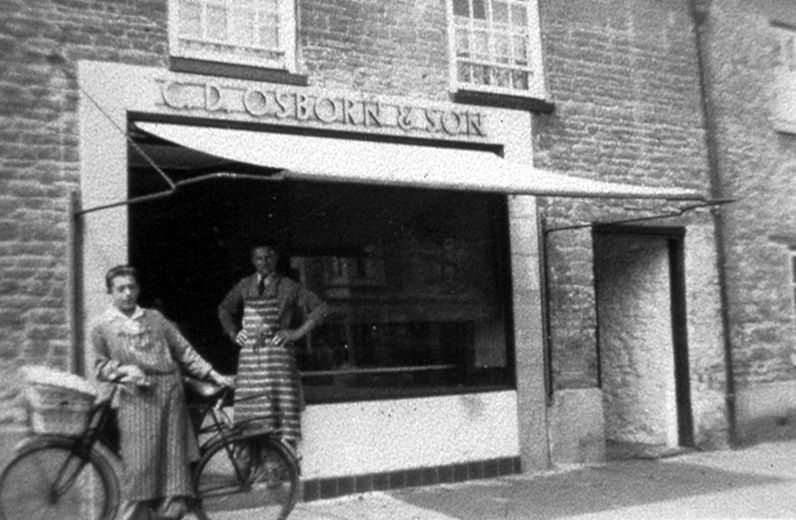
Harold Osborn’s butchers shop in the 1950s
Also on the other side of the coin, at aged 9/10 you might have been expected to cycle on a second hand child sized’s cycle up to the Harold Osborn’s butchers shop in Olney High Street, before setting off for school. This shop opened at 8 o’clock on Tuesday, Thursday and Saturday mornings to buy meat such as lamb chops for dinner, but often the real aim was to bring home some offal when available to supplement the meagre meat ration at that time.
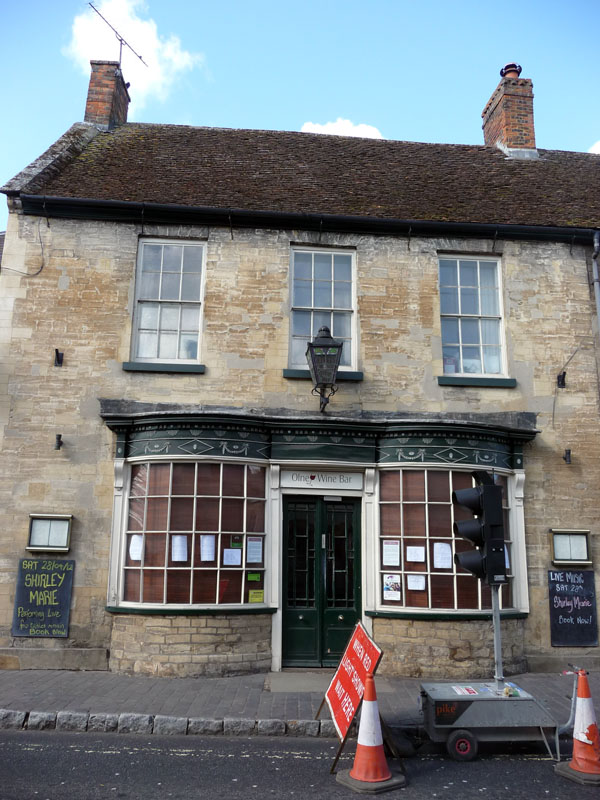
Claude Barker’s Bakery (Recent Photo)
.
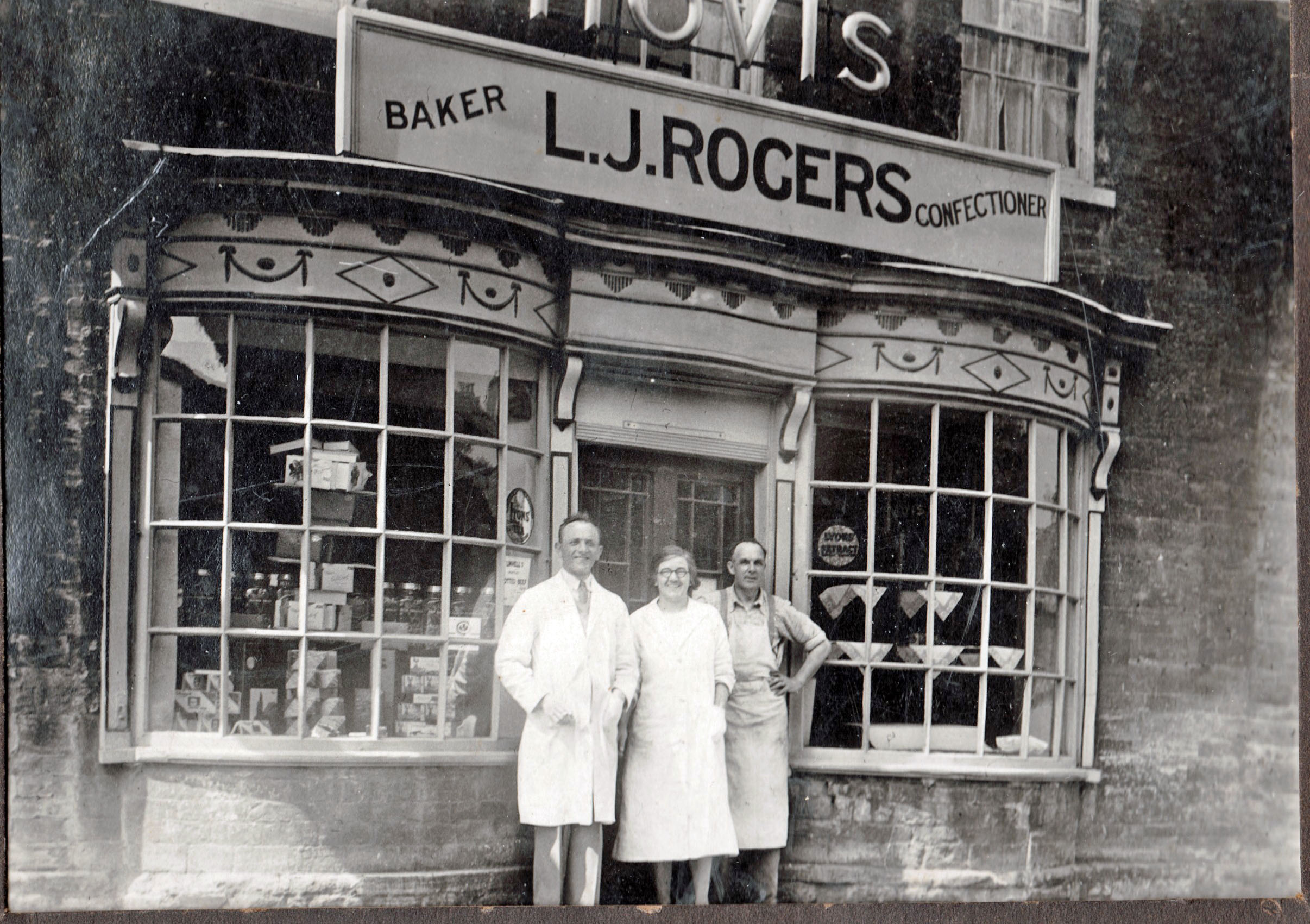
Another likely errand at this age was being ‘instructed’ to cycle to another baker’s shop, this time Barkers in High Street South, for 10.00 am on a Saturday morning to buy a Madeira cake, as again, this helped to supplement the sugar ration. I have not been keen on Madeira cake ever since! This errand totally ruined ‘playtime’ on a Saturday morning which often involved playing in ‘Colson’s meadows with friends and a neighbour’s dog that had adopted us – a small white mongrel terrier named ‘Tiny’.
I guess it was only natural that children were assigned errands and jobs in the home as our father’s worked relatively long hours, typically 48 hours per week, excluding overtime, which meant that they worked Saturday mornings until lunch time.
.
Olney 3 – Freddie Johnson’s shop in Dartmouth Road
Freddie Johnson,
As per Roy Kitchener
man from lavendon joke,
snuff
library
liquorice wood & sticks.
Out of date toffees
Kindling wood
Iron fence
Freddie Johnson ran his mini emporium from the front room and hallway of his little terraced house in Dartmouth Road.
He also ran a window cleaning business throughout the town, with his bicycle
and ladders (cart).
His wife used to help him, in the shop.
It was a cramped little room full of shelves, floor to ceiling, with a counter in the middle the top of which was covered by his lending library books, Mills and Boon. His charge was I believe 1 old penny a week.
He was a snuff user, and happily gave people a sniff, which caused the unexperienced a bad sneezing fit, which he found very funny.
The shop really sold everything available (without coupons?) Kindling wood, sweets, his toffees were usually out of date and had turned to fudge.
Liquorice wood and sticks were also available there.
He was quite a comedian, with many jokes to tell to the unwary, for instance
“They haven’t buried that woman from Lavendon yet you know” “Oh why not?”
Response… “she’s not dead yet “.
.
Olney 4 Joe Barrick’s shop on the corner of Midland Road and Newton Street
tba
.
Olney 5 Clothes and shoe shops
.
Olney 6 Restaurants & Cafes
